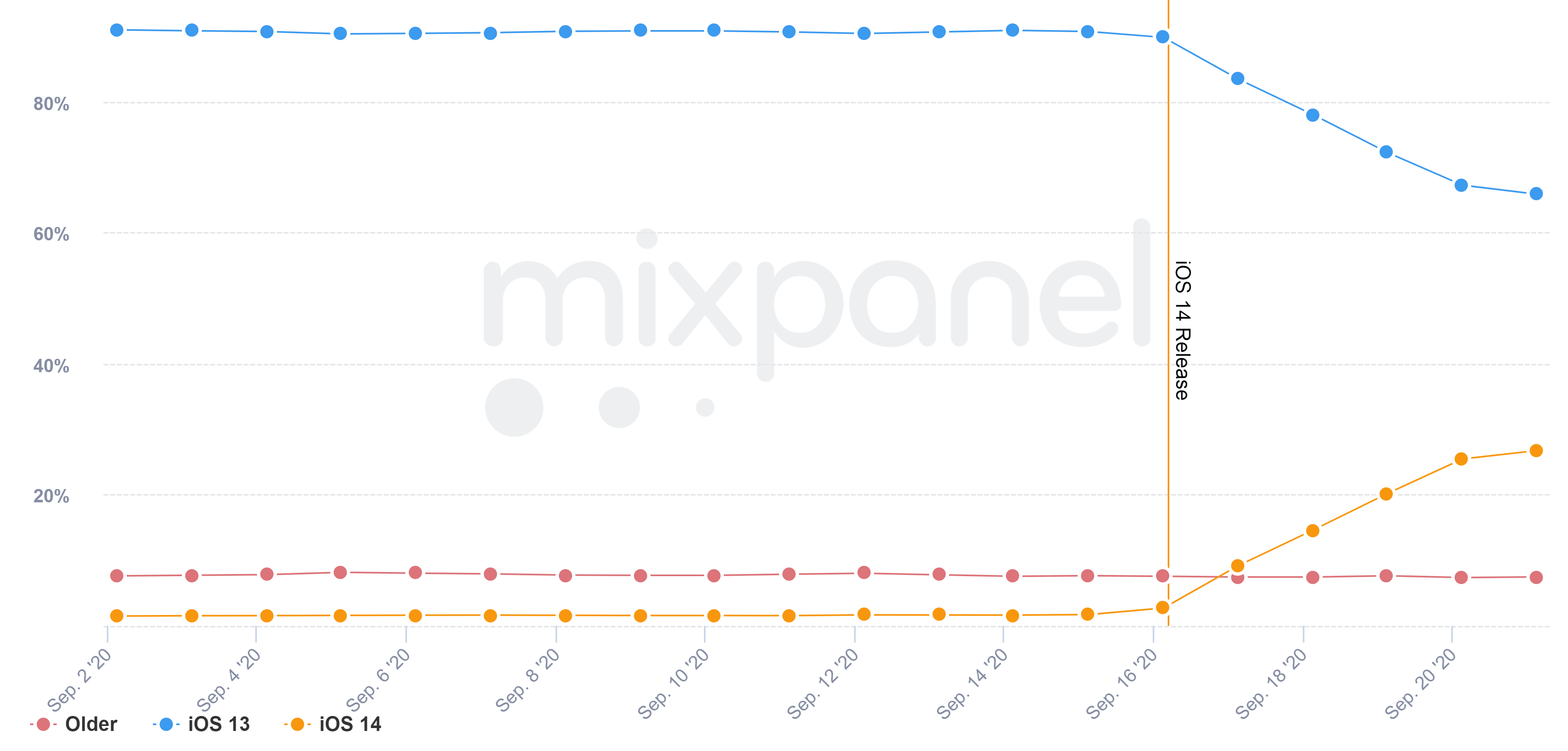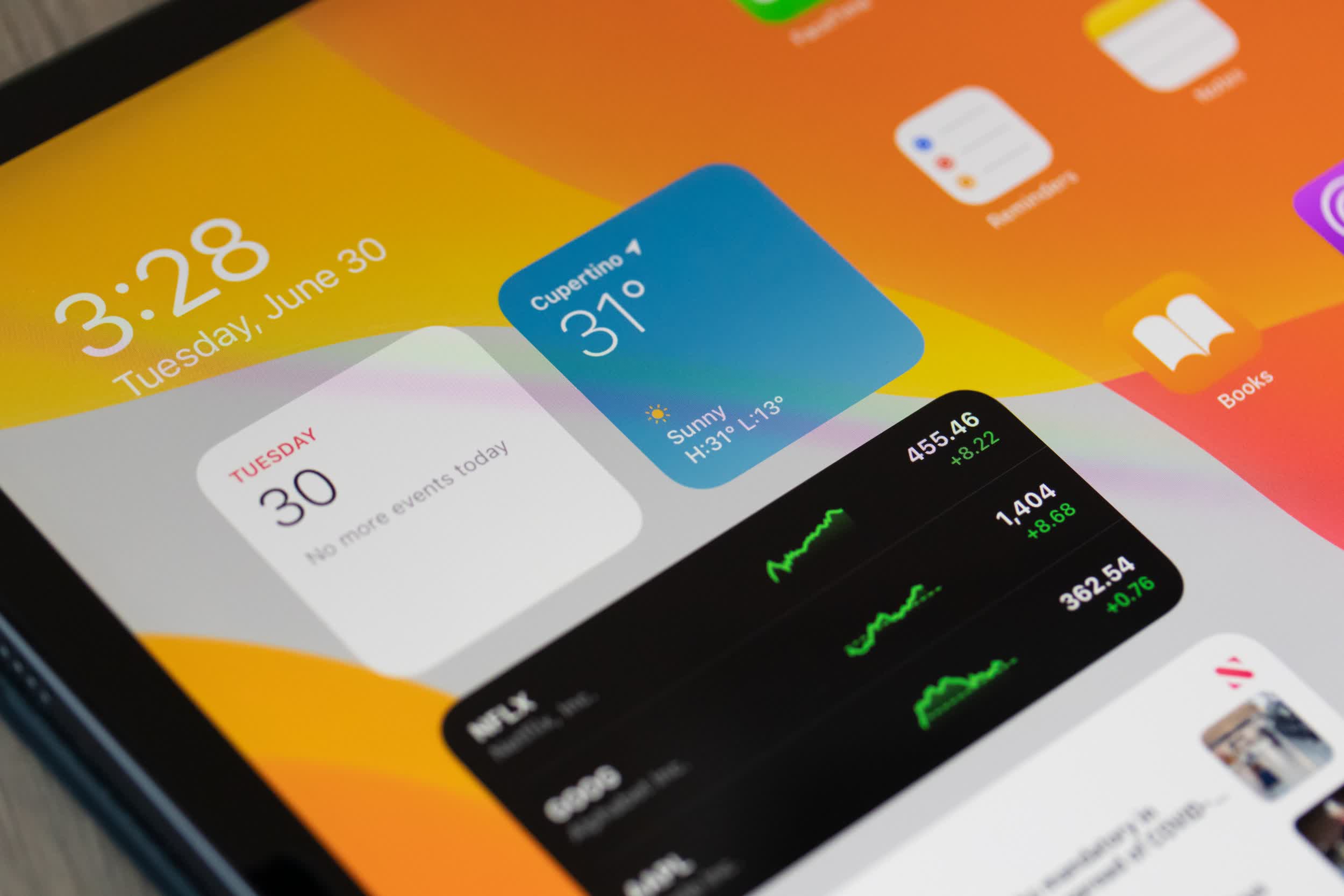Why it matters: Apple has never had a problem with mobile OS fragmentation, a trend that continues this year even as new iPhones haven't launched on time due to Covid-19. How will Apple's pending launch impact the numbers moving forward? We'll find out soon enough.
It's taken just five days for the latest version of Apple's mobile operating system to reach more than a quarter of active devices.
iOS 14, which arrived a day after Apple unveiled new models of the Apple Watch and iPad, is running on approximately 26.73 percent of active devices according to the latest statistics from analytics firm Mixpanel.

Naturally, the growth has to come from somewhere. Adoption of iOS 13 sat at 90.63 percent last Tuesday but has since fallen to 65.81 percent. Usage of versions older than iOS 13 is also down ever so slightly, from 7.66 percent a week ago to 7.46 percent today.
Keep in mind that these stats aren't official. Apple typically waits around a month or so before publishing those numbers and with the delayed launch of the iPhone 12 this year due to the pandemic, it could be even longer before we see anything official from the horse's mouth.
Apple launched the first version of iOS 14 for developers on June 22, 2020, and pushed out the first public beta to consumers on July 9.
Masthead credit: JL Images
